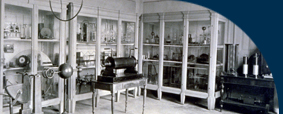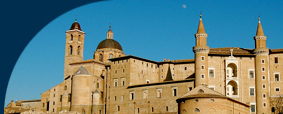The origin of these odd glass drops that aroused the interest of the 17th century scholars is not exactly known. It is highly probable (based upon some evidence) that they were the direct consequence of the normal glass working made by Germanic glass-makers in the first half of the 17th century, who were among the first in Europe to establish workshops for the blowing and the working of glass. Towards the middle of the century the drops attracted the attention of experimental philosophers. The Frenchman Balthasar de Monconys (1611-1665), who was a king's advisor and also a physician and a magistrate, wrote an account in his journey reporting that in 1665 he had seen some experiments in which the droplets were used, first in Paris and then in London. The historian and economist John Beckmann suggested that the Parisian droplets came from Stockholm, having been taken to the Swedish court by the French ambassador Chanut. Other documents of the same year reported their presence in Leyden and in Amsterdam. In England they were known as "Rupert's Drops", a name derived from Prince Rupert, Charles I's nephew and expert in practical chemical arts, who was the first to take them to England in about the year 1660. In Italy they had been probably known in Rome since 1665. They had come from Flanders (Borelli's letter to Prince Leopoldo) - since in that year Cardinal Gio. Carlo had sent some of them to the "serenissimo" Grand Duke of Tuscany, Ferdinand II. The Grand Duke received others from Brussels and Amsterdam, in 1662. On the Grand Duke's request, Redi (1626-1698) also made a long series of observations and experiments "to determine the cause of that admirable phenomenon".
|
Non è noto con esattezza l'origine di queste curiose gocce di vetro che eccitarono grandemente l'interesse dei dotti del XVII secolo. E' molto probabile (ci sono testimonianze a riguardo) che esse siano state la diretta conseguenza delle normali operazioni di lavorazione del vetro da parte di artigiani vetrai germanici della prima metà del XVII secolo, tra i primi in Europa ad istituire officine per il soffiaggio e la lavorazione artigianale del vetro; certamente esse giunsero all'attenzione dei filosofi sperimentali verso la metà del secolo. Il consigliere del Re, nonché medico e magistrato francese, Balthasar de Monconys (1611-1665) riferisce nelle sue relazioni di viaggio del 1656 di aver presenziato ad alcuni esperimenti con tali gocciole, dapprima a Parigi e in seguito a Londra. Lo storico ed economista John Beckmann ipotizza che quelle gocciole parigine provenissero da Stoccolma, portate dall'ambasciatore francese, Chanut, alla corte svedese. Altre testimonianze del medesimo anno le segnalano presenti a Leida e ad Amsterdam. In Inghilterra esse furono conosciute come "Rupert's drops", dal principe Rupert, nipote di Carlo I ed esperto in arti chimiche pratiche, che per primo le portò dal continente, all'incirca verso il 1660. In Italia sembra che esse fossero conosciute in Roma fin dal 1655 - provenienti dalle Fiandre (lettera del Borelli al Principe Leopoldo) - avendo il Cardinale Gio. Carlo speditene alcune, in quell'anno, al Serenissimo Granduca di Toscana Ferdinando II; questi, ne ricevette altre nel 1662, provenienti da Bruxelles ed Amsterdam. Su richiesta del Granduca, il Redi (1626-1698) istituí anche una lunga serie di osservazioni ed esperienze "per rintracciare la cagione di quel mirabile fenomeno". |
Description: There are 13 tempered glass drops with thin, long points. They are produced by rapid cooling (for example, by letting them fall in cold water when they are melted). The instantaneous solidification determines a strong surface tension that keeps a balance in the internal mass. |
Descrizione: Si tratta di 13 gocce di vetro temperato terminanti con una sottile ed allungata punta. Esse si ottengono tramite un rapido raffreddamento (ad esempio facendole cadere fuse in acqua fredda). La solidificazione istantanea determina una forte tensione superficiale che mantiene l'equilibrio della massa interna. |
Utilisation: The inflated spherical part of the drop resists even a hammer's blows but it breaks into powder visibly and very loudly if it is slightly scratched on the surface or if the point is broken. |
Uso: la parte rigonfiata, sferoidale, della goccia resiste anche ai colpi del martello ma si polverizza vistosamente e fragorosamente se assoggettata a minime scalfitture superficiali o quando se ne spezza la punta. |
Bibliography: Targioni Tozzetti [1780], pp. 258-259; Timbs [1860], pp. 98-100; Milani [1867], vol. II, pp. 112-114. |
Bibliografia: Targioni Tozzetti [1780], pp. 258-259; Timbs [1860], pp. 98-100; Milani [1867], Vol. II, pp. 112-114 |

